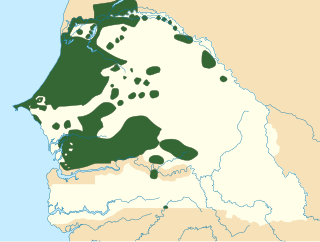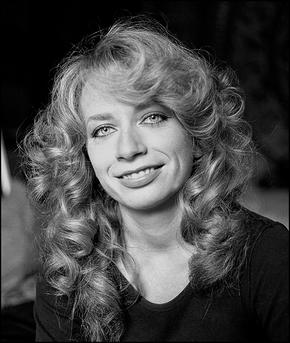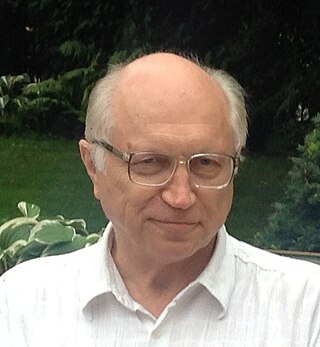History
The concept of the museum was launched in 2010 by Mark Oremland, a New Zealander who studied linguistics at Paris Descartes University and who wanted to make this field accessible to the widest possible public. Between 2010, and 2013, the documentary resources were collected, and the pedagogical material was designed. In 2013, a team of craftspeople, computer specialists, students, professors and translators worked on building, organizing and presenting this material in the different spaces of the museum. [1] , [2] , [3]
The museum was inaugurated on 11 October 2013, by Jean-Pierre Lecoq, mayor of the 6th arrondissement. [4]

Wolof is a Niger–Congo language spoken by the Wolof people in much of West African subregion of Senegambia that is split between the countries of Senegal, Mauritania, and the Gambia. Like the neighbouring languages Serer and Fula, it belongs to the Senegambian branch of the Niger–Congo language family. Unlike most other languages of its family, Wolof is not a tonal language.
The Prix Volney is awarded by the Institute of France after proposition by the Académie des Inscriptions et Belles-Lettres to a work of comparative philology.

Paul Jules Antoine Meillet was one of the most important French linguists of the early 20th century. He began his studies at the Sorbonne University, where he was influenced by Michel Bréal, Ferdinand de Saussure and the members of the L'Année sociologique. In 1890, he was part of a research trip to the Caucasus, where he studied the Armenian language. After his return, de Saussure had gone back to Geneva so he continued the series of lectures on comparative linguistics that the Swiss linguist had given.
André Martinet was a French linguist, influential due to his work on structural linguistics. In linguistic theory, Martinet is known especially for his studies on linguistic economy and double articulation.
French orthography encompasses the spelling and punctuation of the French language. It is based on a combination of phonemic and historical principles. The spelling of words is largely based on the pronunciation of Old French c. 1100–1200 AD, and has stayed more or less the same since then, despite enormous changes to the pronunciation of the language in the intervening years. Even in the late 17th century, with the publication of the first French dictionary by the Académie française, there were attempts to reform French orthography.
Basaa, or Mbene, is a Bantu language spoken in Cameroon by the Basaa people. It is spoken by about 300,000 people in the Centre and Littoral regions.

Charles Bally was a Swiss linguist from the Geneva School. He lived from 1865 to 1947 and was, like Ferdinand de Saussure, from Switzerland. His parents were Jean Gabriel, a teacher, and Henriette, the owner of a cloth store. Bally was married three times: first to Valentine Leirens, followed by Irma Baptistine Doutre, who was sent into a mental institution in 1915, and finally with Alice Bellicot. In addition to his edition of de Saussure's lectures, Course in General Linguistics, Charles Bally also played an important role in linguistics.
Mpadə is an Afro-Asiatic language spoken in northern Cameroon and southwestern Chad. Dialects are Bodo, Biamo, Digam, Mpade (Makari), Shoe (Shewe), and Woulki.
Wuzlam, also called Uldeme (Ouldémé), is an Afro-Asiatic language of the Chadic branch. It is spoken in northern Cameroon.
Marcel Samuel Raphaël Cohen was a French linguist. He was an important scholar of Semitic languages and especially of Ethiopian languages. He studied the French language and contributed much to general linguistics.
The Bongo–Bagirmi or Sara–Bongo–Bagirmi (SBB) languages are the major branch of the Central Sudanic language family with about forty languages. Principal groups include Bagirmi languages such as Naba and the Sara languages. They are spoken across CAR, Chad, South Sudan, Sudan and adjacent countries.
Georges-Jean Pinault is a French linguist who is professor of linguistics at the École pratique des hautes études. He is one of the leading experts on Tocharian languages and has published more than two hundred articles on Indo-European linguistics. He is one of the editors of the journal Tocharian and Indo-European Studies.
Denis Creissels is a French professor of linguistics at the University of Lyon.

Mitsou Ronat was a French poet, linguist and specialist of literary theory.
Panchronic phonology is an approach to historical phonology. Its aim is to formulate generalizations about sound changes that are independent of any particular language or language group.

Albert Dauzat was a French linguist specializing in toponymy and onomastics.
René Gsell (1921–2000) was a French linguist and phonetician.

Andrzej Aleksander Włodarczyk, known as André Wlodarczyk, is a Polish-French linguist.
The Bourbonnais dialects are spoken in the historic region of Bourbonnais, located in central France and including the department of Allier the area surrounding Saint-Amand-Montrond, in southeastern Cher. This linguistic zone is located between those home to the languages of Oïl, Occitan, and Franco-Provençal.
Djamel Eddine Kouloughli was an Algerian and French linguist who specialized in the phonology and grammatical tradition of Arabic.







